

Nelson Monument by Sir Richard Westmacott, RA, sculptor and Matthew Cotes Wyatt, designer. Unveiled: 21 October, 1813. Basement: granite. Pedestal: Westmorland marble. Vent grills on basement: iron. All sculptural work: bronze. Height of basement: 6 feet ½ inches; pedestal: 8 feet ten inches; bronze group 14 feet 2 inches; overall: 24 feet 6 inches. Behind the Town Hall, Liverpool. Note: The background on the right-hand photograph has been removed to make the sculpture easier to see. [Click on images for larger pictures.]
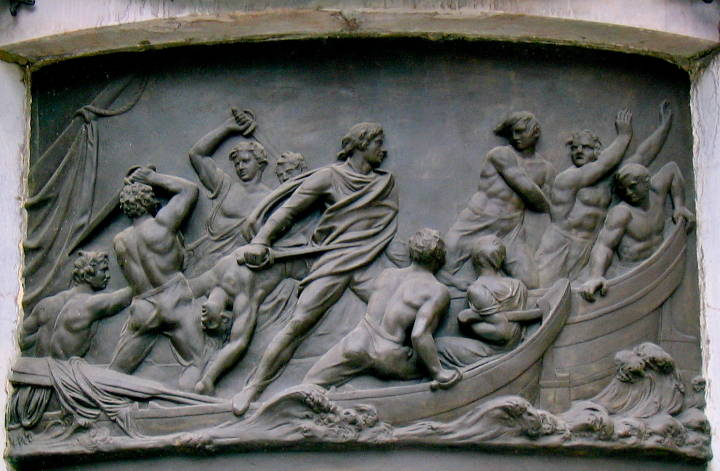
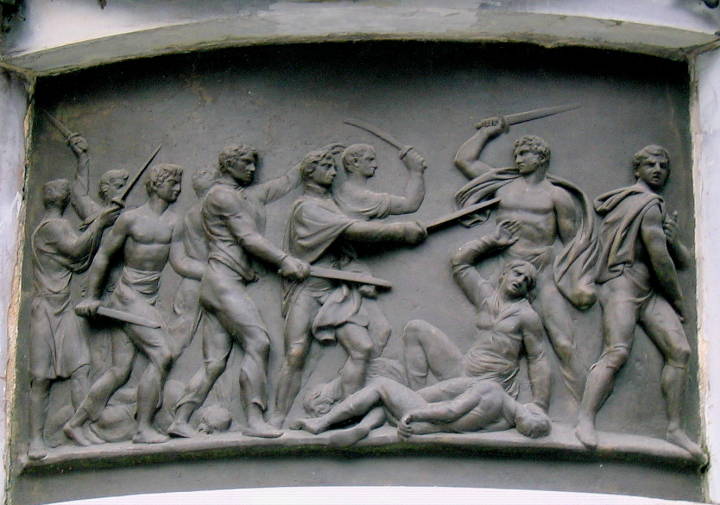
The Nelson Monument, Liverpool's first important piece of public sculpture, was intended to "express the town's gratitude for the decisive victory of the English fleet at Trafalgar, while at the same time lamenting the loss of the national hero" (Cavanagh 54). Its architectural design dates from 1807-08, and the Friends of Liverpool Monuments considerl it "the most important Neo-classical sculpture in the World Heritage site" (that is to say. in Liverpool). However, Joseph Sharples and Richard Pollard are nearer the mark in describing it thus:
Cylindrical plinth with four battle reliefs, separated by life-size nude male captives in chains — memorable works of Romanticism. Above, the apotheosis of the hero of Trafalgar, with the skeletal figure of Death emerging from under a captured flag. (323; emphasis added).
In fact, this memorably dramatic composition owed more to Wyatt than the generally neo-classical Westmacott. Wyatt was considered too inexperienced for the actual sculpting, so it was deemed necessary to "enlist the proven modelling and bronze casting skills of Richard Westmacott to translate the idea into actuality" (Cavanagh 55); but, while accepting that the details of the reliefs were only lightly sketched, Wyatt himself denied that his design for the rest was only embryonic (see Sharples and Pollard again, 323). In such a case, it is hard to distinguish clearly between the different contributions of the artists involved. The result, though, is not in doubt: the monument is striking both in its entirety and in its individual details.
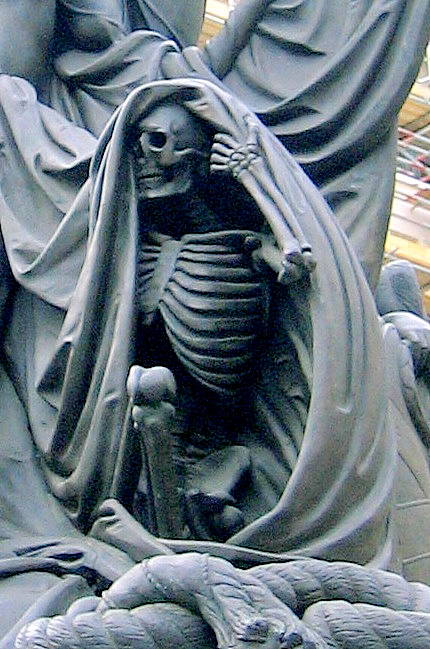
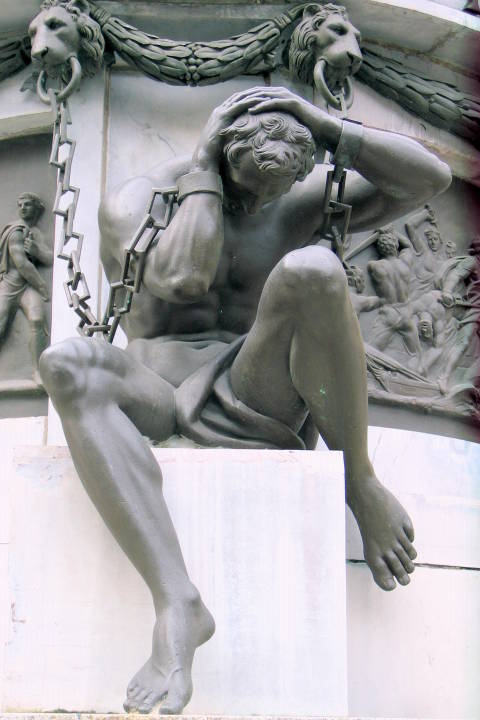
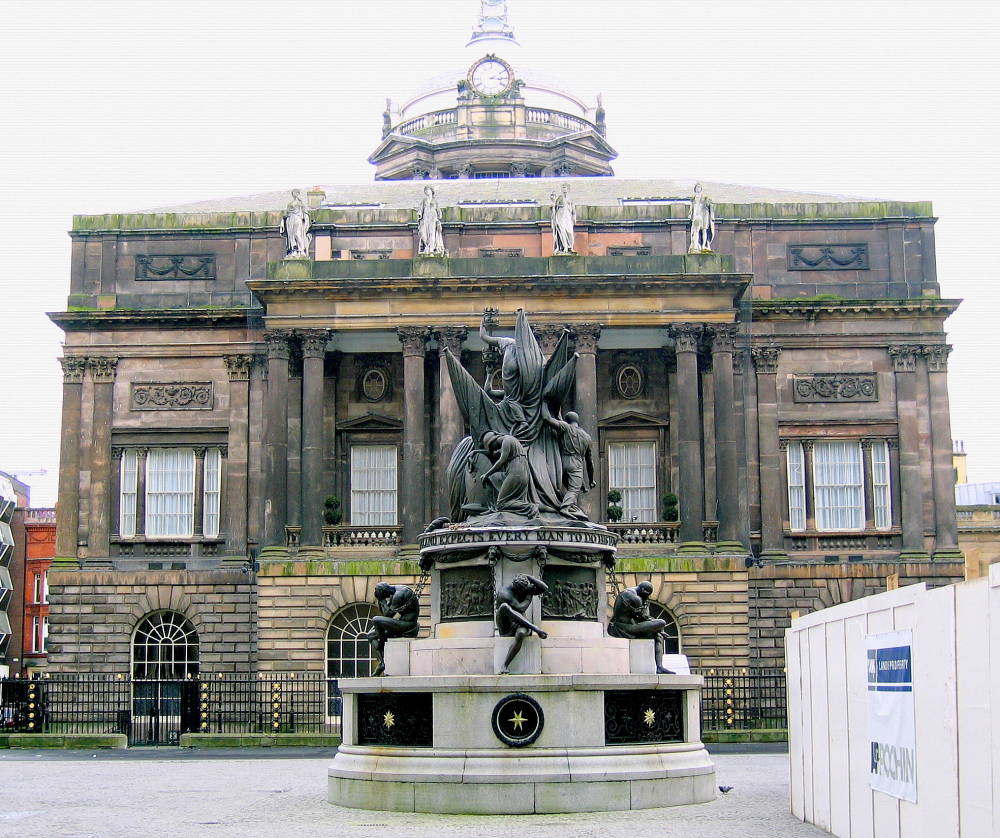
Related Material
- Nelson Monument, Bull Ring, Birmingham, by Richard Westmacott
- Statue on Nelson's Column, London, by E. H. Baily
- Liverpool (homepage with links to its history, institutions, architecture, and sculpture)
Photograph and caption by Robert Freidus and formatting and image manipulation by George P. Landow. You may use these images without prior permission for any scholarly or educational purpose as long as you (1) credit the photographer and (2) link your document to this URL in a web document or cite the Victorian Web in a print one.
Bibliography
Cavanagh, Terry. Public Sculpture of Liverpool. Liverpool: Liverpool University Press, 1996.
Friends of Liverpool Monuments. Liverpool Maritime Mercantile City World Heritage Site: Sculptures of the Commercial Quarter. Leaflet available in the tourist information office in the city centre.
Sharples, Joseph, and Richard Pollard. "Liverpool." Lancashire: Liverpool and the South West, by Pollard et. al. The Buildings of England series. New Haven: Yale, 2006. 242ff.
Last modified 18 June 2013